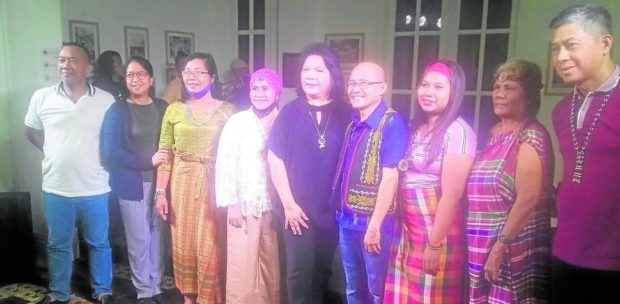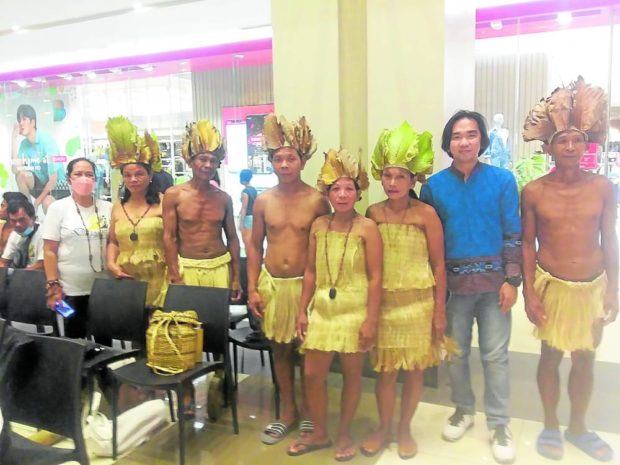Bacolod celebrates indigenous people through music and dance
Eight clusters of Indigenous Peoples (IPs) from all over the Visayas descended upon Negros Museum and the Ayala Malls in the now bustling city of Bacolod, once a symbol of malnutrition and semifeudalism. The occasion was Dayaw in the Visayas, a spin-off from the recent festival in Luzon celebrating tribal lifestyle, tradition and culture.
The eight clusters were 1) the Ati of Iloilo, Capiz and Guimaras; 2) Panay-Bukidnon (“of the fields”), Iloilo, Aklan, Panay Island and Antique; 3) Ata-Bukidnon Negros; 4) Waray Abaknon of Samar; 5) Ilonggo, Hiligaynon, Aklanon and Kiniray-a; 6) Romblonon-Tagalog, Sibuyan Island-Mangyan; 7) Palawan Batok, Tagbanua; and (8) Jama Mapun Palawanin and Mulbug Muslims.
Marichu Tellano, deputy executive director of the National Commission for Culture and the Arts (NCCA), which sponsored the event, hailed the indigenous peoples as “the shepherds of the environment.”

Pablito Gonzales, vice head of the NCCA’s Subcommission on Cultural Communities and Traditional Arts, said that the festival was organized “to recognize, promote and respect indigenous people’s rights, and to give awareness to the ‘shepherds’.” He added, “Much has happened, a storm, a pandemic, but you (the participants) are all still here.”
Babaylan ritual
Things got off to a start at the Negros Museum, with a solemn Babaylan ritual by male members of the Ata-Bukidnon Negros, clad in red and black, performing to the beat of gongs, castanets, drums, cymbals and a native bamboo flute by a four-man indigenous band. The traditional ritual was meant to bless the event.
The men wielded makeshift swords and lances, chanted, and danced with whiplash movements, and made a ceremony of presenting salt packets and burned incense.
The performances followed, as each ethnolinguistic group displayed their wares in dance and music. A highlight of the evening was a courtship dance by Panay Bukidnon participants—with a difference. The handsome young man was wooing not one but two comely maidens. The man was energetic, his arms wildly swinging while the girls were, of course, more graceful and sedate.

After that performance I approached the three young dancers and asked if the dance meant that the Panay Bukidnon brave could have two girlfriends or two wives. The man gave a half-smile, while the girls only giggled at my interpretation.
To the malls
The following day the festivities moved to the Ayala Malls in the city, as representatives from the clusters showcased their traditional dances and music. To the sound of an all-male band beating their drums and gongs, the women danced in rhythmic fashion and exhibited fancy footwork (Palawan). Four performers, three women and one man, emphasized the movements of their hands (Capiz/Guimaras Ati).
With each presentation, dancers and musicians grew in number, guitars and bamboo percussion coming into play. Each dance had one performer giving a dramatic spiel. There was a choral number, warnings of a typhoon and a resounding no to toxic culture (kadiri). The number concluded with a joyful chorus (Samar).

The Jama Mapun presented a lone woman Muslim dancer, who flashed her long fingers, painted white, and performed with flair, with intricate movements, hips swaying provocatively. There was thanksgiving for a good harvest (Sibuyan). Panay Bukidnon came out with their Binanog Dance, based on a legend, as more members joined in and the three young dancers replicated their courtship dance.
The program ended with a rousing community dance, as the members of the audience were prevailed upon to dance.
“This is the first time Dayaw is performed face-to-face in the Visayas,” Gonzales said. “And there will be one in Central Mindanao soon. So, we can say that Dayaw is really national, as it is in Luzon, Visayas and Mindanao.” —CONTRIBUTED INQ

For all the latest Lifestyle News Click Here
For the latest news and updates, follow us on Google News.

